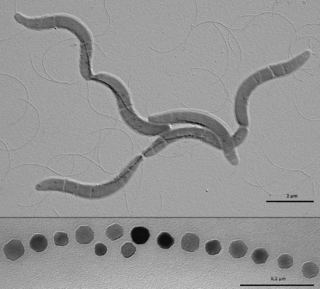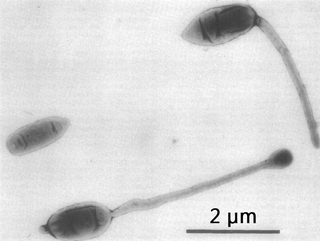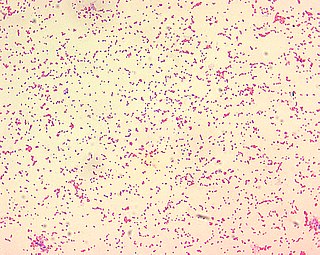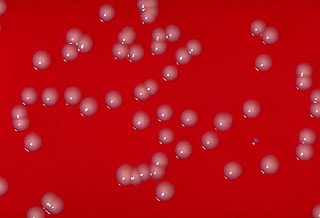
The Rhodospirillales are an order of Pseudomonadota.

The Rhizobiaceae is a family of Pseudomonadota comprising multiple subgroups that enhance and hinder plant development. Some bacteria found in the family are used for plant nutrition and collectively make up the rhizobia. Other bacteria such as Agrobacterium tumefaciens and Rhizobium rhizogenes severely alter the development of plants in their ability to induce crown galls or hairy roots, respectively. The family has been of an interest to scientists for centuries in their ability to associate with plants and modify plant development. The Rhizobiaceae are, like all Pseudomonadota, Gram-negative. They are aerobic, and the cells are usually rod-shaped. Many species of the Rhizobiaceae are diazotrophs which are able to fix nitrogen and are symbiotic with plant roots.
The Phyllobacteriaceae are a family of bacteria. The most common genus is Mesorhizobium which contains some of the rhizobia species.
The Aurantimonadaceae are a small family of marine bacteria.

The Hyphomicrobiaceae are a family of bacteria. Among others, they include Rhodomicrobium, a genus of purple bacteria.

The Methylobacteriaceae are a family of Hyphomicrobiales.

The Brucellaceae are a family of the Gram-negative Hyphomicrobiales. They are named after Sir David Bruce, a Scottish microbiologist. They are aerobic chemoorganotrophes. The family comprises pathogen and soil bacteria
The Coriobacteriales are an order of Actinomycetota.

Alphaproteobacteria is a class of bacteria in the phylum Pseudomonadota. The Magnetococcales and Mariprofundales are considered basal or sister to the Alphaproteobacteria. The Alphaproteobacteria are highly diverse and possess few commonalities, but nevertheless share a common ancestor. Like all Proteobacteria, its members are gram-negative and some of its intracellular parasitic members lack peptidoglycan and are consequently gram variable.
The Nitrobacteraceae are a family of gram-negative, aerobic bacteria. They include plant-associated bacteria such as Bradyrhizobium, a genus of rhizobia associated with some legumes. It also contains animal-associated bacteria such as Afipia felis, formerly thought to cause cat-scratch disease. Others are free-living, such as Rhodopseudomonas, a purple bacterium found in marine water and soils. The strain Rhodopseudomonas palustris DX-1 can generate an electric current with no hydrogen production, a trait being explored in the development of the microbial fuel cell. The genus Afipia has also been found in the atmosphere, where it uses methylsulfonylmethane as a carbon source.
The Sphingomonadales are an order of the Alphaproteobacteria.
Phyllobacterium is a genus of Gram-negative, oxidase- and catalase-positive, aerobic bacteria.
Ancylobacter is a genus of aerobic bacteria from the family of Xanthobacteraceae.
Xanthobacter is a genus of Gram-negative bacteria from the family Xanthobacteraceae.
Devosiaceae is a family of Alphaproteobacteria.
Stappiaceae is a family of Alphaproteobacteria.
Tepidamorphaceae is a family of Alphaproteobacteria.
Pleomorphomonadaceae is a family of Alphaproteobacteria.
Ahrensiaceae is a family of Alphaproteobacteria.

The Mycobacteriales are an order of bacteria.






